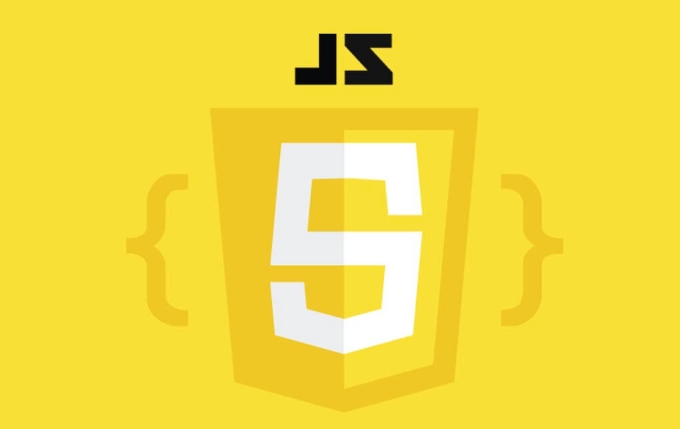How to handle dates and times: a practical JS roundup
Jun 29, 2025 am 01:41 AMThe following points should be noted when processing dates and time in JavaScript: 1. When creating dates, use new Date() and prioritize ISO format to avoid browser differences; 2. When obtaining and setting date components, please note that getMonth() returns 0-11, which is inconsistent with 1-31 of getDate(); 3. When formatting, you can use padStart() or use date-fns and other libraries to improve flexibility; 4. For time zone processing, it is recommended to use Luxon, Moment-Timezone or Temporal API for more precise support. Mastering these core points can effectively deal with common problems.

Handling dates and times in JavaScript can be surprisedly tricky. Even though JS has a built-in Date object, it's not always intuitive and comes with some gotchas. Here's a practical rundown of how to work with dates and times effectively in JavaScript.

Creating and Parsing Dates
The first thing you'll usually do is create a date. The most common way is using the new Date() constructor. You can pass in various formats: no arguments (current time), a date string, or individual numbers for year, month, day, etc.

new Date(); // current date and time new Date('2025-04-05'); // April 5th, 2025 new Date(2025, 3, 5); // Note: months are zero-indexed! So 3 = April
One common pitfall: date strings can behave differently across browsers. For example, parsing '04/05/2025' may return different results depending on the browser locale. To stay safe:
- Prefer ISO format (
YYYY-MM-DD) when possible. - If you're constructing dates from user input or other sources, consider validating or normalizing them before creating a
Dateobject.
Getting and Setting Date Components
Once you have a date object, you'll often want to extract or modify parts of it — like the day, month, or hour.

Use methods like:
-
.getDate()/.setDate() -
.getMonth()/.setMonth()(remember: 0 = January) -
.getFullYear()/.setFullYear() -
.getHours()/.setHours(), and so on for minutes, seconds, million seconds
If you need UTC versions, use .getUTCDate() , .getUTCMonth() , etc.
A small but easy-to-miss detail: getMonth() returns 0–11, while getDate() returns 1–31. That mismatch trips people up sometimes.
Formatting and Displaying Dates
JavaScript's native Date methods for formatting aren't very flexible. You might see people using .toString() , .toDateString() , or .toLocaleDateString() — but these given limited control over the output format and vary by browser.
For more control, here are a few options:
Use
.padStart()to format numbers consistently:const month = String(date.getMonth() 1).padStart(2, '0');
Consider libraries like date-fns or Luxon if you need advanced formatting, localization, or relative time support.
- Use Luxon or Moment-Timezone.
- Or look into the newer Temporal API if you're working in environments that support it.
If your needs are simple, just building a formatted string manually with date components is totally fine.
Time Zones and Daylight Saving Changes
Time zones are one of the trickiest parts of working with dates. By default, JavaScript uses the system's local time zone. But if you need to handle specific zones or daylight saving changes, the built-in Date object falls short.
You can get the timezone offset with .getTimezoneOffset() , which returns minutes difference between UTC and local time. But that only tells you the offset at that specific moment — not the full IANA timezone name like "America/New_York".
For real timezone handling:
Otherwise, you may find yourself making assumptions that don't hold true everywhere.
That's basically all you need to know to get started with dates and times in JS. It's not rocket science, but there are enough edge cases to keep things interesting.
The above is the detailed content of How to handle dates and times: a practical JS roundup. For more information, please follow other related articles on the PHP Chinese website!

Hot AI Tools

Undress AI Tool
Undress images for free

Undresser.AI Undress
AI-powered app for creating realistic nude photos

AI Clothes Remover
Online AI tool for removing clothes from photos.

Clothoff.io
AI clothes remover

Video Face Swap
Swap faces in any video effortlessly with our completely free AI face swap tool!

Hot Article

Hot Tools

Notepad++7.3.1
Easy-to-use and free code editor

SublimeText3 Chinese version
Chinese version, very easy to use

Zend Studio 13.0.1
Powerful PHP integrated development environment

Dreamweaver CS6
Visual web development tools

SublimeText3 Mac version
God-level code editing software (SublimeText3)
 How to make an HTTP request in Node.js?
Jul 13, 2025 am 02:18 AM
How to make an HTTP request in Node.js?
Jul 13, 2025 am 02:18 AM
There are three common ways to initiate HTTP requests in Node.js: use built-in modules, axios, and node-fetch. 1. Use the built-in http/https module without dependencies, which is suitable for basic scenarios, but requires manual processing of data stitching and error monitoring, such as using https.get() to obtain data or send POST requests through .write(); 2.axios is a third-party library based on Promise. It has concise syntax and powerful functions, supports async/await, automatic JSON conversion, interceptor, etc. It is recommended to simplify asynchronous request operations; 3.node-fetch provides a style similar to browser fetch, based on Promise and simple syntax
 JavaScript Data Types: Primitive vs Reference
Jul 13, 2025 am 02:43 AM
JavaScript Data Types: Primitive vs Reference
Jul 13, 2025 am 02:43 AM
JavaScript data types are divided into primitive types and reference types. Primitive types include string, number, boolean, null, undefined, and symbol. The values are immutable and copies are copied when assigning values, so they do not affect each other; reference types such as objects, arrays and functions store memory addresses, and variables pointing to the same object will affect each other. Typeof and instanceof can be used to determine types, but pay attention to the historical issues of typeofnull. Understanding these two types of differences can help write more stable and reliable code.
 React vs Angular vs Vue: which js framework is best?
Jul 05, 2025 am 02:24 AM
React vs Angular vs Vue: which js framework is best?
Jul 05, 2025 am 02:24 AM
Which JavaScript framework is the best choice? The answer is to choose the most suitable one according to your needs. 1.React is flexible and free, suitable for medium and large projects that require high customization and team architecture capabilities; 2. Angular provides complete solutions, suitable for enterprise-level applications and long-term maintenance; 3. Vue is easy to use, suitable for small and medium-sized projects or rapid development. In addition, whether there is an existing technology stack, team size, project life cycle and whether SSR is needed are also important factors in choosing a framework. In short, there is no absolutely the best framework, the best choice is the one that suits your needs.
 JavaScript time object, someone builds an eactexe, faster website on Google Chrome, etc.
Jul 08, 2025 pm 02:27 PM
JavaScript time object, someone builds an eactexe, faster website on Google Chrome, etc.
Jul 08, 2025 pm 02:27 PM
Hello, JavaScript developers! Welcome to this week's JavaScript news! This week we will focus on: Oracle's trademark dispute with Deno, new JavaScript time objects are supported by browsers, Google Chrome updates, and some powerful developer tools. Let's get started! Oracle's trademark dispute with Deno Oracle's attempt to register a "JavaScript" trademark has caused controversy. Ryan Dahl, the creator of Node.js and Deno, has filed a petition to cancel the trademark, and he believes that JavaScript is an open standard and should not be used by Oracle
 What is the cache API and how is it used with Service Workers?
Jul 08, 2025 am 02:43 AM
What is the cache API and how is it used with Service Workers?
Jul 08, 2025 am 02:43 AM
CacheAPI is a tool provided by the browser to cache network requests, which is often used in conjunction with ServiceWorker to improve website performance and offline experience. 1. It allows developers to manually store resources such as scripts, style sheets, pictures, etc.; 2. It can match cache responses according to requests; 3. It supports deleting specific caches or clearing the entire cache; 4. It can implement cache priority or network priority strategies through ServiceWorker listening to fetch events; 5. It is often used for offline support, speed up repeated access speed, preloading key resources and background update content; 6. When using it, you need to pay attention to cache version control, storage restrictions and the difference from HTTP caching mechanism.
 Handling Promises: Chaining, Error Handling, and Promise Combinators in JavaScript
Jul 08, 2025 am 02:40 AM
Handling Promises: Chaining, Error Handling, and Promise Combinators in JavaScript
Jul 08, 2025 am 02:40 AM
Promise is the core mechanism for handling asynchronous operations in JavaScript. Understanding chain calls, error handling and combiners is the key to mastering their applications. 1. The chain call returns a new Promise through .then() to realize asynchronous process concatenation. Each .then() receives the previous result and can return a value or a Promise; 2. Error handling should use .catch() to catch exceptions to avoid silent failures, and can return the default value in catch to continue the process; 3. Combinators such as Promise.all() (successfully successful only after all success), Promise.race() (the first completion is returned) and Promise.allSettled() (waiting for all completions)
 Leveraging Array.prototype Methods for Data Manipulation in JavaScript
Jul 06, 2025 am 02:36 AM
Leveraging Array.prototype Methods for Data Manipulation in JavaScript
Jul 06, 2025 am 02:36 AM
JavaScript array built-in methods such as .map(), .filter() and .reduce() can simplify data processing; 1) .map() is used to convert elements one to one to generate new arrays; 2) .filter() is used to filter elements by condition; 3) .reduce() is used to aggregate data as a single value; misuse should be avoided when used, resulting in side effects or performance problems.
 JS roundup: a deep dive into the JavaScript event loop
Jul 08, 2025 am 02:24 AM
JS roundup: a deep dive into the JavaScript event loop
Jul 08, 2025 am 02:24 AM
JavaScript's event loop manages asynchronous operations by coordinating call stacks, WebAPIs, and task queues. 1. The call stack executes synchronous code, and when encountering asynchronous tasks, it is handed over to WebAPI for processing; 2. After the WebAPI completes the task in the background, it puts the callback into the corresponding queue (macro task or micro task); 3. The event loop checks whether the call stack is empty. If it is empty, the callback is taken out from the queue and pushed into the call stack for execution; 4. Micro tasks (such as Promise.then) take precedence over macro tasks (such as setTimeout); 5. Understanding the event loop helps to avoid blocking the main thread and optimize the code execution order.






